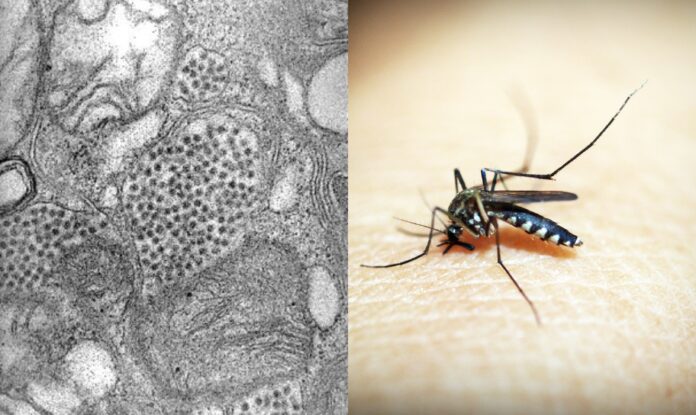Eastern Equine Encephalitis Virus (EEEV) is a mosquito-borne virus that primarily affects horses and humans. Here’s an overview of its symptoms, causes, treatment, and prevention:
Symptoms:
- EEEV infection can range from asymptomatic to severe.
- In symptomatic cases, onset typically occurs 4 to 10 days after the bite of an infected mosquito.
- Symptoms may include fever, headache, chills, vomiting, muscle aches, joint pain, and fatigue.
- Severe cases can progress to encephalitis (inflammation of the brain), leading to symptoms such as seizures, disorientation, coma, and in some cases, death.
- In horses, symptoms may include fever, depression, weakness, loss of appetite, and neurological signs such as staggering or circling.
Causes:
- EEEV is transmitted primarily through the bite of infected mosquitoes, primarily species belonging to the genus Culiseta and Coquillettidia in the United States.
- The virus primarily circulates between birds and mosquitoes, with horses and humans considered incidental hosts.
Treatment:
- There is no specific antiviral treatment for EEEV.
- Supportive care is the mainstay of treatment for symptomatic cases, focusing on managing symptoms and complications.
- Hospitalization may be necessary for severe cases, particularly those involving encephalitis.
Prevention:
- Personal protective measures, such as using insect repellents containing DEET, wearing long-sleeved shirts and pants, and avoiding outdoor activities during peak mosquito activity (dawn and dusk), can help prevent mosquito bites.
- Community-level mosquito control efforts, such as eliminating standing water breeding sites and applying larvicides or adulticides, can reduce mosquito populations and thus the risk of EEEV transmission.
- Vaccination is available for horses, which can significantly reduce the risk of EEEV infection in these animals. However, there is currently no vaccine approved for use in humans.
- In areas where EEEV is endemic, surveillance for the virus in mosquitoes and birds is important for early detection and response efforts.
Overall, preventing mosquito bites and minimizing exposure to mosquitoes are key strategies for reducing the risk of EEEV infection.

































